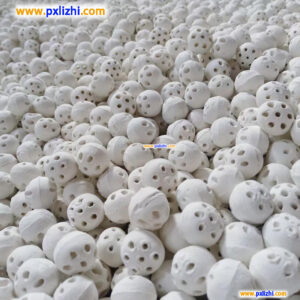Alumina Ceramic Ball: Properties and Applications

# Alumina Ceramic Ball: Properties and Applications
## Introduction to Alumina Ceramic Balls
Alumina ceramic balls are high-performance ceramic spheres made from aluminum oxide (Al₂O₃). These balls are widely used in various industrial applications due to their exceptional mechanical, thermal, and chemical properties. With alumina content typically ranging from 90% to 99.9%, these ceramic balls offer superior performance compared to traditional metal or plastic alternatives.
## Key Properties of Alumina Ceramic Balls
### 1. High Hardness and Wear Resistance
Alumina ceramic balls exhibit exceptional hardness (Mohs hardness of 9), making them highly resistant to wear and abrasion. This property makes them ideal for applications involving friction and mechanical stress.
### 2. Excellent Thermal Stability
These ceramic balls can withstand extreme temperatures, maintaining their structural integrity from cryogenic conditions up to 1,600°C (2,912°F) in some formulations. Their low thermal expansion coefficient ensures dimensional stability across wide temperature ranges.
### 3. Chemical Inertness
Alumina ceramic balls are highly resistant to chemical corrosion, making them suitable for use in aggressive environments with acids, alkalis, and organic solvents.
### 4. Electrical Insulation
With excellent dielectric properties, alumina ceramic balls serve as effective electrical insulators in various electronic and electrical applications.
### 5. Low Density
Compared to metal balls, alumina ceramic balls have lower density (typically 3.6-3.9 g/cm³), which reduces centrifugal forces in high-speed applications.
## Common Applications of Alumina Ceramic Balls
### 1. Grinding Media
Alumina ceramic balls are extensively used as grinding media in ball mills for:
– Ceramic raw material processing
– Mineral processing
– Paint and pigment production
– Pharmaceutical manufacturing
### 2. Bearing Components
Their hardness and wear resistance make them ideal for:
– Precision bearings in high-speed applications
– Corrosive environment bearings
– High-temperature bearing systems
### 3. Valve Components
Alumina ceramic balls serve as:
– Valve balls in chemical processing equipment
– Check valve components
– Flow control elements in aggressive media
### 4. Catalyst Supports
In chemical and petrochemical industries, they are used as:
– Catalyst carriers in reactors
– Support media for catalytic processes
– Packing materials in distillation columns
### 5. Other Specialized Applications
– Wear-resistant liners in equipment
– Insulating components in electronics
– Ballistic protection elements
– Semiconductor manufacturing components
## Grades and Specifications
Alumina ceramic balls are available in various grades based on alumina content:
Grade | Alumina Content | Typical Applications
90% | 90% Al₂O₃ | General industrial applications
95% | 95% Al₂O₃ | Higher wear resistance applications
99% | 99% Al₂O₃ | High-purity applications
99.5%+ | 99.5-99.9% Al₂O₃ | Semiconductor, medical, and ultra-high purity uses
## Manufacturing Process
The production of alumina ceramic balls typically involves:
1. Raw material preparation and mixing
2. Forming (isostatic pressing or extrusion)
3. High-temperature sintering (1,500-1,800°C)
4. Precision grinding and polishing
5. Quality inspection and sorting
Keyword: alumina ceramic ball
## Advantages Over Alternative Materials
Compared to steel, glass, or plastic balls, alumina ceramic balls offer:
– Longer service life in abrasive environments
– Better performance in corrosive conditions
– Higher temperature resistance
– Reduced maintenance requirements
– Lower energy consumption in grinding applications
## Selection Considerations
When choosing alumina ceramic balls for specific applications, consider:
– Required alumina purity level
– Operating temperature range
– Chemical exposure conditions
– Mechanical load requirements
– Surface finish specifications
– Size tolerances
## Maintenance and Handling
While alumina ceramic balls are